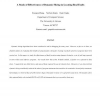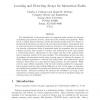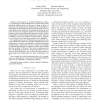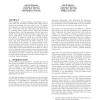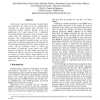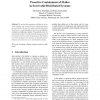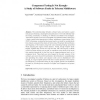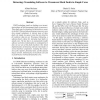118
Voted
ESE
2007
15 years 22 days ago
2007
Dynamic slicing algorithms have been considered to aid in debugging for many years. However, as far as we know, no detailed studies on evaluating the benefits of using dynamic sl...
JCO
2008
15 years 23 days ago
2008
The identification of interaction faults in component-based systems has focussed on indicating the presence of faults, rather than their location and magnitude. While this is a va...
109
Voted
ET
2006
15 years 24 days ago
2006
1 Fault diagnosis of full-scan designs has been progressed significantly. However, most existing techniques are aimed at a logic block with a single fault. Strategies on top of the...
ET
2006
15 years 24 days ago
2006
We present an efficient built-in self-test (BIST) architecture for testing and diagnosing stuck-at faults, delay faults, and bridging faults in FPGA interconnect resources. The BIS...
105
click to vote
ICDCS
2010
IEEE
15 years 1 months ago
2010
IEEE
—In this paper, we classify multitolerant systems, i.e., systems that tolerate multiple classes of faults and provide potentially different levels of tolerance to them in terms o...
148
Voted
SOQUA
2007
15 years 1 months ago
2007
When choosing a testing technique, practitioners want to know which one will detect the faults that matter most to them in the programs that they plan to test. Do empirical evalua...
99
Voted
FTCS
1996
15 years 2 months ago
1996
In the research reported in this paper, transient faults were injected in the nodes and in the communication subsystem (by using software fault injection) of a commercial parallel...
CSREASAM
2003
15 years 2 months ago
2003
Abstract The uncontrolled propagation of faults due to malicious intrusion can severely decrease system performance and survivability. Our goal is to employ available information a...
131
click to vote
PTS
2007
15 years 2 months ago
2007
The interrelationship between software faults and failures is quite intricate and obtaining a meaningful characterization of it would definitely help the testing community in decid...
113
Voted
DSN
2008
IEEE
15 years 2 months ago
2008
IEEE
CMOS technology trends are leading to an increasing incidence of hard (permanent) faults in processors. These faults may be introduced at fabrication or occur in the field. Wherea...
